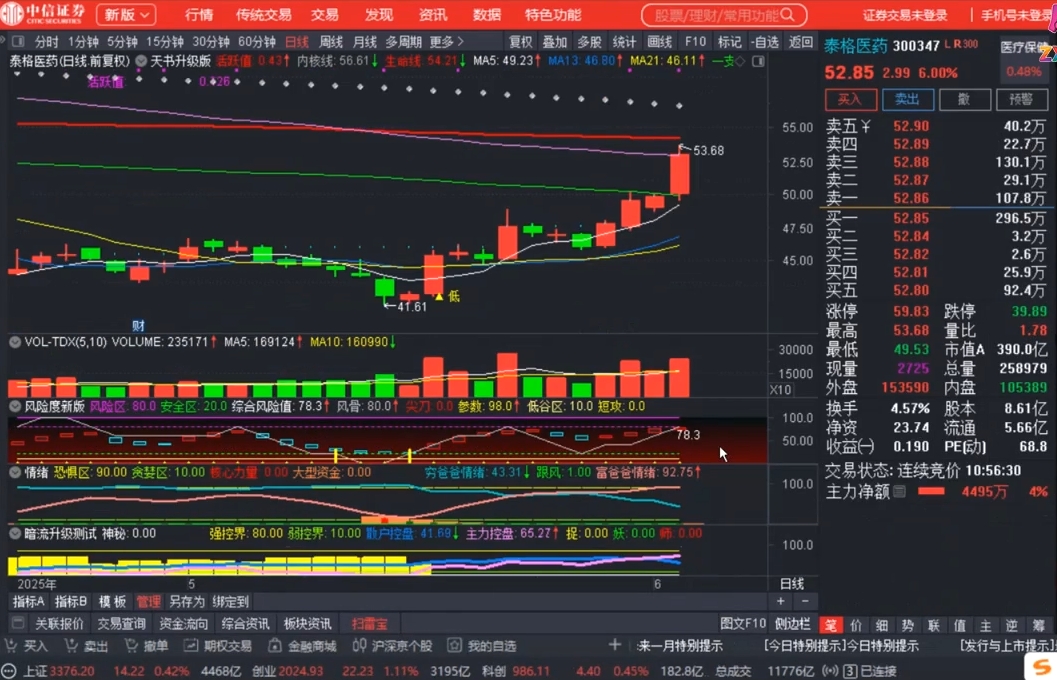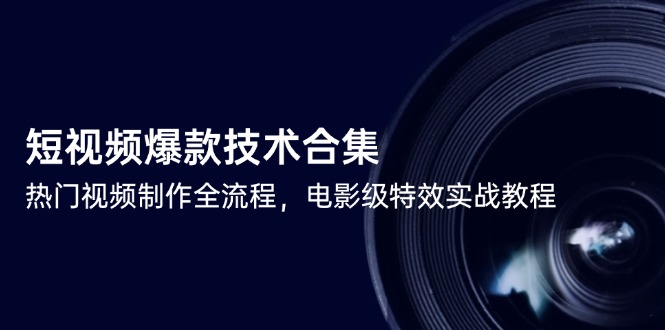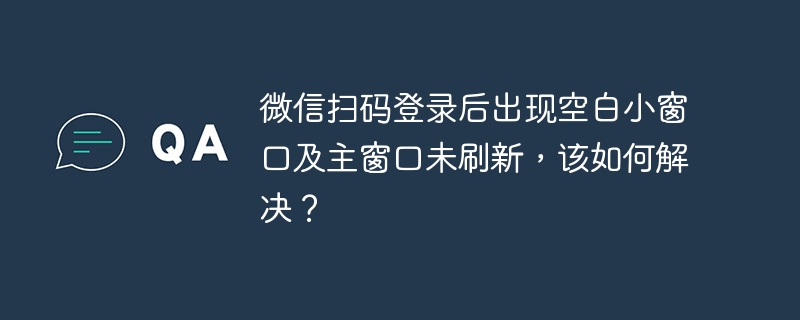
本文详细探讨了使用python Turtle库开发Pong游戏时常见的碰撞检测逻辑错误,特别是distance()方法在条件判断中的误用。通过分析问题根源,本文提供了精确的碰撞判断方案,并引入了基于screen.ontimer()的动画循环优化策略,旨在帮助开发者构建更稳定、流畅的游戏体验。
1. 碰撞检测逻辑的常见陷阱
在开发基于turtle库的pong游戏时,一个常见的错误是未能正确处理碰撞检测的逻辑表达式。特别是在使用distance()方法时,开发者可能会误将其返回值直接作为布尔条件,导致非预期的行为。
问题分析:
原始代码中的碰撞检测逻辑如下:
if the_ball.distance(r_paddle) and the_ball.xcor() > 320 or the_ball.distance(l_paddle) < 50 and the_ball.xcor() < -320: the_ball.x_bounce()
这里的核心问题在于the_ball.distance(r_paddle)这部分。distance()方法返回的是一个浮点数,表示当前Turtle与目标Turtle之间的距离。在Python中,任何非零的数字在布尔上下文中都会被评估为True。这意味着,只要球与右侧挡板之间存在任何距离(即不完全重合),the_ball.distance(r_paddle)就会被视为True。
因此,当球靠近右侧区域(the_ball.xcor() > 320)时,只要the_ball.distance(r_paddle)返回一个非零值(几乎总是如此,除非球和挡板完全重叠),整个the_ball.distance(r_paddle) and the_ball.xcor() > 320部分就可能为True,从而触发球的反弹,使得整个右侧区域都像挡板一样。
立即学习“Python免费学习笔记(深入)”;
解决方案:
正确的碰撞检测应该明确指定一个距离阈值,例如50像素,来判断球是否足够接近挡板以发生碰撞。修正后的逻辑应为:
if the_ball.distance(r_paddle) < 50 and the_ball.xcor() > 320 or the_ball.distance(l_paddle) < 50 and the_ball.xcor() < -320: the_ball.x_bounce()
通过添加
2. 游戏循环的优化:从time.sleep到screen.ontimer
在Turtle动画中,使用time.sleep()来控制游戏速度和动画帧率是一种常见但效率不高的方法。time.sleep()会阻塞程序的执行,导致屏幕更新不流畅,甚至可能在某些操作系统或配置下引起卡顿。
问题分析:
原始代码中的游戏主循环使用了while True和time.sleep(0.1):
while game_is_on: time.sleep(0.1) screen.update() the_ball.move() # ... collision logic ...
这种模式的问题在于,time.sleep(0.1)会暂停整个程序100毫秒,期间没有任何事件处理或屏幕更新发生。这会使得动画看起来不连贯,并且对用户输入(如按键)的响应也会有延迟。
解决方案:
Turtle库提供了更优雅的动画循环机制:screen.ontimer(func, delay)。这个方法会在指定的delay毫秒后调用一次func函数,并且不会阻塞主线程。为了实现连续动画,我们可以在被调用的函数内部再次调用screen.ontimer,形成一个递归的、非阻塞的动画循环。
screen.ontimer 的优势:
- 非阻塞: 允许程序继续处理其他事件(如用户输入、窗口重绘),保持应用的响应性。
- 动画流畅: 避免了time.sleep带来的卡顿感,使动画过渡更平滑。
- 事件驱动: 更符合GUI编程的事件驱动模型。
3. 完整的Pong游戏代码实现与改进
以下是整合了上述碰撞检测修正和游戏循环优化的完整Pong游戏代码。此外,还包含了一些其他优化,例如将screen.update()调用分散到各个对象的移动和更新方法中,以及对挡板的初始化和移动方式进行了调整,使其更符合Turtle的面向对象特性。
from turtle import Screen, Turtle import time # 尽管最终会用ontimer,但为了展示差异,这里保留 # --- Scoreboard Class --- class Scoreboard(Turtle): def __init__(self): super().__init__() self.hideturtle() self.color('white') self.penup() self.l_score = 0 self.r_score = 0 self.update_score() def update_score(self): self.clear() self.goto(-100, 200) self.write(self.l_score, align='center', font=('Courier', 80, 'normal')) self.goto(100, 200) self.write(self.r_score, align='center', font=('Courier', 80, 'normal')) # 每次分数更新后立即刷新屏幕,确保显示最新分数 screen.update() def left_point(self): self.l_score += 1 self.update_score() def right_point(self): self.r_score += 1 self.update_score() # --- Ball Class --- class Ball(Turtle): def __init__(self): super().__init__() self.shape('circle') self.color('white') self.penup() # 确保不绘制移动轨迹 self.x_move = 10 self.y_move = 10 def move(self): new_x = self.xcor() + self.x_move new_y = self.ycor() + self.y_move self.goto(new_x, new_y) # 每次球移动后立即刷新屏幕 screen.update() def y_bounce(self): self.y_move *= -1 def x_bounce(self): self.x_move *= -1 def reset_position(self): self.goto(0, 0) self.x_bounce() # 重置后球反向移动 # 重置位置后立即刷新屏幕 screen.update() # --- Paddle Class --- class Paddle(Turtle): def __init__(self): super().__init__() self.shape('square') self.color('white') # 调整shapesize,使其在setheading(90)后仍保持垂直长条状 # 原始shapesize(5, 1)是竖直的,但若不改变setheading,则需要shapesize(1, 5) # 这里为了配合setheading(90)使其“向上”是沿着其长边,所以 shapesize(1, 5) self.shapesize(stretch_wid=1, stretch_len=5) # 宽度1,长度5 self.setheading(90) # 设置朝向为向上,这样go_up/go_down可以利用forward/backward self.penup() def go_up(self): # 使用forward代替直接修改ycor,更符合Turtle的移动方式 self.forward(20) screen.update() def go_down(self): # 使用backward代替直接修改ycor self.backward(20) screen.update() # --- Screen Setup --- screen = Screen() screen.setup(width=800, height=600) screen.bgcolor('black') screen.title("My PONGIE") screen.tracer(0) # 关闭自动刷新,手动控制更新 # --- Game Objects --- r_paddle = Paddle() r_paddle.setx(350) # 直接设置x坐标 l_paddle = Paddle() l_paddle.setx(-350) # 直接设置x坐标 the_ball = Ball() score = Scoreboard() # --- Event Listeners --- screen.onkey(r_paddle.go_up, 'Up') screen.onkey(r_paddle.go_down, 'Down') screen.onkey(l_paddle.go_up, 'w') screen.onkey(l_paddle.go_down, 's') screen.listen() # --- Game Loop (using ontimer) --- def play(): the_ball.move() # 墙壁碰撞检测 if not -280 < the_ball.ycor() < 280: the_ball.y_bounce() # 挡板碰撞检测 (已修正逻辑) # 使用or连接左右两边的判断,确保任何一边碰撞都反弹 elif (the_ball.distance(r_paddle) < 50 and the_ball.xcor() > 320) or (the_ball.distance(l_paddle) < 50 and the_ball.xcor() < -320): the_ball.x_bounce() # 球出右边界 elif the_ball.xcor() > 380: the_ball.reset_position() score.left_point() # 球出左边界 elif the_ball.xcor() < -380: the_ball.reset_position() score.right_point() # 每100毫秒(0.1秒)调用一次play函数,实现动画循环 screen.ontimer(play, 100) # 初始屏幕更新,显示所有对象 screen.update() # 启动游戏循环 play() # 保持窗口打开,直到手动关闭 screen.mainloop()
4. 注意事项与最佳实践
- 条件判断的优先级: 在复杂的布尔表达式中,and的优先级高于or。为了确保逻辑清晰和避免歧义,推荐使用括号明确分组,例如 (condition1 and condition2) or (condition3 and condition4)。
- Turtle动画的流畅性: 始终优先使用screen.ontimer()进行动画循环,而非time.sleep()。这能保证程序的响应性和动画的流畅性。
- screen.tracer(0)与screen.update(): 当screen.tracer(0)被调用时,Turtle将不会自动更新屏幕。这意味着你需要手动在关键时刻调用screen.update()来显示变化。在示例中,我们将screen.update()放在了Ball、Paddle和Scoreboard的移动/更新方法中,以及主游戏循环的开始和结束,确保每次对象状态改变后都能及时刷新。
- 代码模块化: 尽管在这个例子中所有代码被整合到一个文件中,但在更复杂的项目中,将不同的类(如Paddle, Ball, Scoreboard)放在单独的模块(.py文件)中是更好的实践,可以提高代码的可读性和可维护性。
- 挡板的初始化: 示例中对Paddle的shapesize和setheading进行了调整。shapesize(stretch_wid=1, stretch_len=5)会创建一个宽度为1单位(默认20像素)长度为5单位(默认100像素)的矩形。然后setheading(90)使其朝上,这样forward()和backward()就沿着挡板的长度方向移动,与垂直移动的需求相符。
通过理解并应用这些改进,开发者可以构建出更健壮、更流畅的Python Turtle Pong游戏,并避免常见的逻辑陷阱。



















